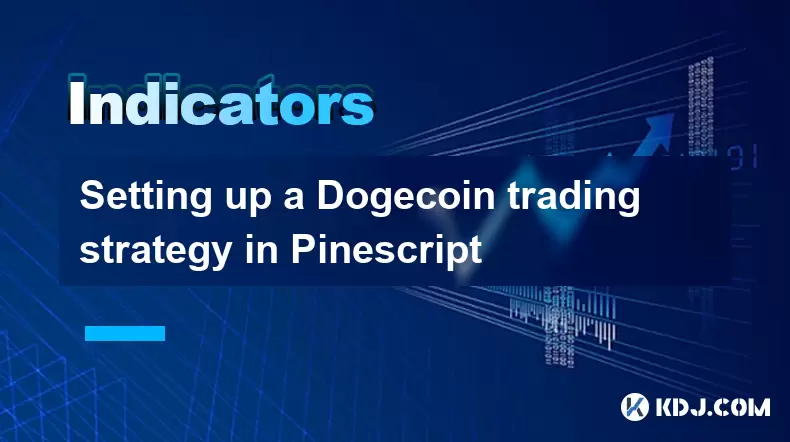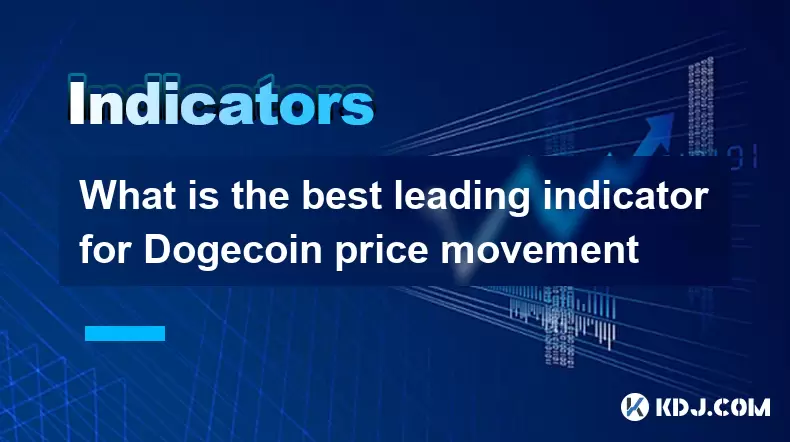-
 Bitcoin
Bitcoin $108,641.9143
0.44% -
 Ethereum
Ethereum $2,539.5956
0.97% -
 Tether USDt
Tether USDt $1.0007
0.04% -
 XRP
XRP $2.2777
2.50% -
 BNB
BNB $660.2073
0.79% -
 Solana
Solana $151.1059
2.08% -
 USDC
USDC $1.0004
0.05% -
 TRON
TRON $0.2838
-0.03% -
 Dogecoin
Dogecoin $0.1698
3.57% -
 Cardano
Cardano $0.5835
1.74% -
 Hyperliquid
Hyperliquid $39.4787
0.07% -
 Sui
Sui $2.9330
1.09% -
 Bitcoin Cash
Bitcoin Cash $489.1023
1.31% -
 Chainlink
Chainlink $13.3775
1.61% -
 UNUS SED LEO
UNUS SED LEO $9.0201
-0.04% -
 Avalanche
Avalanche $18.2176
2.06% -
 Stellar
Stellar $0.2417
1.98% -
 Toncoin
Toncoin $2.9355
7.33% -
 Shiba Inu
Shiba Inu $0.0...01181
3.23% -
 Litecoin
Litecoin $87.9775
1.54% -
 Hedera
Hedera $0.1569
1.54% -
 Monero
Monero $316.0995
1.13% -
 Polkadot
Polkadot $3.3970
1.36% -
 Dai
Dai $1.0002
0.02% -
 Ethena USDe
Ethena USDe $1.0002
0.00% -
 Bitget Token
Bitget Token $4.4094
0.33% -
 Uniswap
Uniswap $7.4035
6.32% -
 Pepe
Pepe $0.0...01016
4.88% -
 Aave
Aave $275.5935
1.55% -
 Pi
Pi $0.4565
-0.89%
Should I add positions when the volume falls back to the 10-day line in the upward trend?
A drop in volume to the 10-day average during an uptrend may signal a buying opportunity if confirmed by technical indicators and proper risk management.
Jul 02, 2025 at 09:43 am

Understanding the 10-Day Volume Line in Cryptocurrency Trading
In cryptocurrency trading, volume plays a crucial role in confirming price movements and identifying potential reversals or continuations. The 10-day volume line refers to the average volume over the last ten days. When volume drops back to this level during an uptrend, traders often wonder whether it's a good time to add positions.
The 10-day volume line is calculated by taking the sum of the past ten days' trading volumes and dividing it by ten. This gives a moving average of volume that can act as a benchmark for assessing current volume levels. A drop in volume below this line may suggest reduced market interest or consolidation, while a spike above it could signal strong momentum.
Interpreting Volume Behavior During Uptrends
During a sustained upward trend, rising prices are typically accompanied by increasing volume, indicating strong buyer participation. However, when volume starts to fall back to or below the 10-day average, it raises questions about the strength of the trend.
A decline in volume during an uptrend might indicate:
- Profit-taking or short-term consolidation
- Temporary exhaustion of buyers
- Market testing support levels before continuing the trend
It’s important to distinguish between a healthy pullback and a reversal. If prices remain above key support levels and the overall trend structure is intact, a drop in volume to the 10-day line may not necessarily be a bearish signal.
Technical Confirmation Tools to Use Alongside Volume
To make more informed decisions about adding positions, traders should combine volume analysis with other technical indicators. These include:
- Moving Averages: Check if the price is still above key moving averages like the 50-period EMA or 200-period EMA.
- Relative Strength Index (RSI): If RSI is above 50 and not showing signs of overbought conditions, the uptrend may still have legs.
- Bollinger Bands: Observe how price interacts with the middle band and outer bands during low-volume periods.
Using these tools together helps avoid false signals and increases confidence in decision-making when volume dips to the 10-day line.
How to Add Positions Strategically When Volume Drops
If you're considering adding to your position when volume falls back to the 10-day line during an uptrend, here are some strategic steps:
- Confirm the trend remains intact: Ensure that higher lows and higher highs are still forming on the chart.
- Look for candlestick patterns: Bullish formations like hammer, morning star, or bullish engulfing can provide entry signals.
- Set a stop-loss below recent swing lows: Protect capital in case the trend reverses unexpectedly.
- Use limit orders near key support zones: Enter at favorable prices rather than chasing the market.
- Scale in gradually: Instead of investing a large amount all at once, consider splitting your entry into smaller tranches.
Each step should be carefully planned and executed based on predefined rules to prevent emotional trading.
Risk Management Considerations When Adding Positions
Even if the volume drop seems like a good opportunity, risk management must always take precedence. Here are essential practices to follow:
- Limit position size per trade: Never risk more than 1%–2% of your total portfolio on any single trade.
- Maintain a favorable risk-to-reward ratio: Aim for setups where the potential reward justifies the risk taken.
- Avoid over-leveraging: Especially in crypto markets known for volatility, leverage should be used cautiously.
- Keep a trading journal: Record each trade, including the rationale behind entering when volume dropped to the 10-day line.
By adhering to strict risk controls, traders can protect themselves from unexpected market moves even when their initial analysis appears correct.
Frequently Asked Questions
What does it mean if volume stays consistently below the 10-day line?
Consistently low volume compared to the 10-day average may signal weakening interest in the asset. It could precede a consolidation phase or a potential reversal, especially if prices fail to make new highs.
Can I rely solely on volume to decide when to add positions?
No, volume should never be used in isolation. Always combine it with price action and other technical indicators to form a comprehensive trading strategy.
Is it safe to add positions if the price is still rising but volume is falling?
This scenario can indicate bearish divergence, where price continues upward without supporting volume. It may be risky to add long positions unless other confirmatory signals align.
How often should I recalculate the 10-day volume line?
The 10-day volume line updates automatically on most charting platforms. You don’t need to manually calculate it—just ensure your chart settings reflect the correct time frame and data source.
Disclaimer:info@kdj.com
The information provided is not trading advice. kdj.com does not assume any responsibility for any investments made based on the information provided in this article. Cryptocurrencies are highly volatile and it is highly recommended that you invest with caution after thorough research!
If you believe that the content used on this website infringes your copyright, please contact us immediately (info@kdj.com) and we will delete it promptly.
- Litecoin Breakout Watch: What Traders Need to Know Now
- 2025-07-06 16:50:13
- Bitcoin, Solana, Ethereum: Decoding the Latest Buzz on the Blockchain
- 2025-07-06 16:50:13
- Widnes Resident's 50p Could Be Your Ticket to Easy Street: Rare Coin Mania!
- 2025-07-06 16:55:13
- Bitcoin, Solaris Presale, and Token Rewards: What's the Buzz?
- 2025-07-06 16:55:13
- Ethereum Under Pressure: Price Drop Amid Global Uncertainties
- 2025-07-06 17:00:13
- XRP, SEC Case, and Prosperity: A New Era for XRP Holders?
- 2025-07-06 17:10:13
Related knowledge

How to spot manipulation on the Dogecoin chart
Jul 06,2025 at 12:35pm
Understanding the Basics of Chart ManipulationChart manipulation in the cryptocurrency space, particularly with Dogecoin, refers to artificial price movements caused by coordinated trading activities rather than genuine market demand. These manipulations are often executed by large holders (commonly known as whales) or organized groups aiming to mislead...

What is the significance of a Dogecoin engulfing candle pattern
Jul 06,2025 at 06:36am
Understanding the Engulfing Candle Pattern in CryptocurrencyThe engulfing candle pattern is a significant technical analysis tool used by traders to identify potential trend reversals in financial markets, including cryptocurrencies like Dogecoin. This pattern typically consists of two candles: the first one is relatively small and indicates the current...

Dogecoin monthly chart analysis for long term investors
Jul 06,2025 at 10:08am
Understanding the Dogecoin Monthly ChartFor long-term investors, analyzing the monthly chart of Dogecoin (DOGE) provides a macro view of its price behavior over extended periods. The monthly chart captures major trends, key resistance and support levels, and potential reversal zones that are crucial for strategic investment planning. Unlike daily or hou...

How to manage risk using ATR on Dogecoin
Jul 06,2025 at 02:35am
Understanding ATR in Cryptocurrency TradingThe Average True Range (ATR) is a technical indicator used to measure market volatility. Originally developed for commodities, it has found widespread use in cryptocurrency trading due to the high volatility inherent in digital assets like Dogecoin (DOGE). The ATR calculates the average range of price movement ...

Setting up a Dogecoin trading strategy in Pinescript
Jul 06,2025 at 05:00pm
Understanding Dogecoin and Its Place in the Cryptocurrency MarketDogecoin (DOGE) is a decentralized, peer-to-peer cryptocurrency that was initially created as a joke but has since gained significant traction in the crypto market. Despite its humorous origins, Dogecoin has been adopted by a large community and supported by notable figures such as Elon Mu...

What is the best leading indicator for Dogecoin price movement
Jul 06,2025 at 06:00pm
Understanding Leading Indicators in CryptocurrencyIn the world of cryptocurrency trading, leading indicators play a crucial role in forecasting price movements before they occur. These tools are used by traders to anticipate potential market changes and make informed decisions. For Dogecoin (DOGE), which is known for its volatile nature and strong commu...

How to spot manipulation on the Dogecoin chart
Jul 06,2025 at 12:35pm
Understanding the Basics of Chart ManipulationChart manipulation in the cryptocurrency space, particularly with Dogecoin, refers to artificial price movements caused by coordinated trading activities rather than genuine market demand. These manipulations are often executed by large holders (commonly known as whales) or organized groups aiming to mislead...

What is the significance of a Dogecoin engulfing candle pattern
Jul 06,2025 at 06:36am
Understanding the Engulfing Candle Pattern in CryptocurrencyThe engulfing candle pattern is a significant technical analysis tool used by traders to identify potential trend reversals in financial markets, including cryptocurrencies like Dogecoin. This pattern typically consists of two candles: the first one is relatively small and indicates the current...

Dogecoin monthly chart analysis for long term investors
Jul 06,2025 at 10:08am
Understanding the Dogecoin Monthly ChartFor long-term investors, analyzing the monthly chart of Dogecoin (DOGE) provides a macro view of its price behavior over extended periods. The monthly chart captures major trends, key resistance and support levels, and potential reversal zones that are crucial for strategic investment planning. Unlike daily or hou...

How to manage risk using ATR on Dogecoin
Jul 06,2025 at 02:35am
Understanding ATR in Cryptocurrency TradingThe Average True Range (ATR) is a technical indicator used to measure market volatility. Originally developed for commodities, it has found widespread use in cryptocurrency trading due to the high volatility inherent in digital assets like Dogecoin (DOGE). The ATR calculates the average range of price movement ...

Setting up a Dogecoin trading strategy in Pinescript
Jul 06,2025 at 05:00pm
Understanding Dogecoin and Its Place in the Cryptocurrency MarketDogecoin (DOGE) is a decentralized, peer-to-peer cryptocurrency that was initially created as a joke but has since gained significant traction in the crypto market. Despite its humorous origins, Dogecoin has been adopted by a large community and supported by notable figures such as Elon Mu...

What is the best leading indicator for Dogecoin price movement
Jul 06,2025 at 06:00pm
Understanding Leading Indicators in CryptocurrencyIn the world of cryptocurrency trading, leading indicators play a crucial role in forecasting price movements before they occur. These tools are used by traders to anticipate potential market changes and make informed decisions. For Dogecoin (DOGE), which is known for its volatile nature and strong commu...
See all articles

























































































